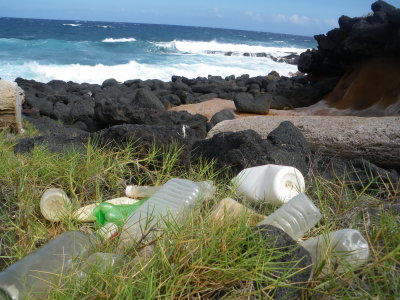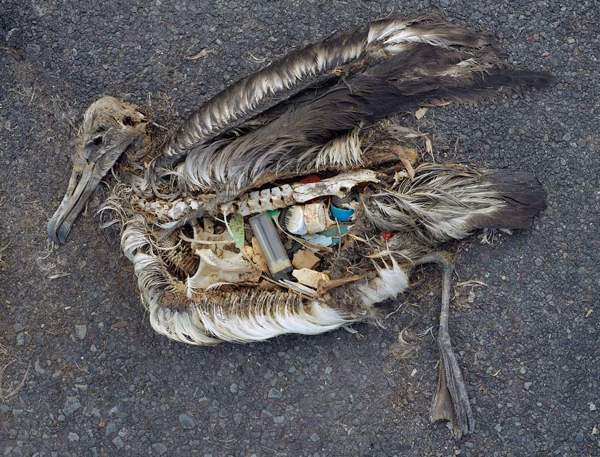Definition:
 The term “Marine Litter” has been introduced to describe discarded, disposed of, or abandoned man-made objects present in the marine and coastal environment. It consists of articles that have been made or used by people and, subsequently, deliberately discarded or accidentally lost.
The term “Marine Litter” has been introduced to describe discarded, disposed of, or abandoned man-made objects present in the marine and coastal environment. It consists of articles that have been made or used by people and, subsequently, deliberately discarded or accidentally lost.
They originate from ocean-based (fishing vessels, cargo ships, stationary platforms, fish farming installations, pleasure crafts and other vessels) or land-based sources (littering, dumping, poor waste management practices, untreated sewage and storm water discharges, riverine inputs, industrial facilities, tourism, extreme natural events) and can be found all around the globe. Most sources of marine pollution are land based and some studies indicate that up to 80% of marine litter originates from land.
Some facts:
This text mainly summarises findings [1] reported in PLOS ONE in 2014.
Each year some 6.4 million tonnes of litter are entering the oceans, or about one kilogram for each human being. Marine litter is defined as ‘‘any persistent, manufactured or processed solid material discarded, disposed of or abandoned in the marine and coastal environment." Litter is present in all marine habitats, from beaches to the most remote points in the oceans. The particular distribution and accumulation of litter in the ocean is influenced by water movements, bottom morphology, and economic activities.
The most abundant marine litter is plastic. Only part of the plastic items float at the sea surface or close to it. Two third of the plastic sinks to the seafloor. Therefore litter accumulation on the seabed is more abundant than in the open sea. Thus, below the floating garbage is an even bigger garbage dump at the sea bottom.
Marine litter accumulates in particular high densities in submarine canyons. Submarine canyons act as passages for litter transport from continental shelves into deeper waters. Submarine canyons are areas where also macrophyte detritus accumulates. Therefore bottom-dwelling fauna and suspension-feeding invertebrates are abundant in submarine canyons. The accumulation of plastics in submarine canyons likely has a detrimental effects on theses deep-sea organisms.
A recent survey [1] of European seas confirmed again that marine litter is found everywhere, from the beach down to the deep sea. The survey uses standardised methods to categorise the litter and to quantify its abundance. Most common litter items included plastic bags, glass bottles and abandoned fishing lines and nets. Plastic represented 41% of the litter items, whilst abandoned fishing gear accounted for 34% of the total. Clinker [*], glass and metal are least common. Density and composition of litter in European seas is comparable to what has found in other parts of the world ocean. Litter density in submarine canyons reached an average of 12.2 – 6,4 items per ten-thousand square meters. This means about 10 items of litter on a surface wide as a football field. Litter density on sea-mounts, mounds and banks were 6.6 to 4.0 items / ha, respectively. Mean litter density for continental shelves and ocean ridges was 5.2 to 1.4 items / ha. A list of locations with highest litter densities in European waters includes the Lisbon Canyon, the Blanes Canyon, the Guilvinec Canyon, and the Setubal Canyon. The lowest litter density was found on the Hatton Bank, the continental slope on the northern side of the Faroe-Shetland Channel, on the Anton Dohrn Sea-mount, in the Whittard Canyon, on the Rockall Bank, north of the Charlie-Gibbs Fracture Zone, and in the Gulf of Lion.
 Litter is a risk for the marine environment. Entanglement in abandoned fishing gear is a serious threat for birds, turtles and marine mammals, it is also causing high mortality of fish through ‘‘ghost fishing''. Plastic is a source of toxic chemicals that are lethal to marine fauna. The degradation of plastics generates micro-plastics that are ingested by organisms, leading to contaminants across trophic levels up to the fish [2] that we may eat.
Litter is a risk for the marine environment. Entanglement in abandoned fishing gear is a serious threat for birds, turtles and marine mammals, it is also causing high mortality of fish through ‘‘ghost fishing''. Plastic is a source of toxic chemicals that are lethal to marine fauna. The degradation of plastics generates micro-plastics that are ingested by organisms, leading to contaminants across trophic levels up to the fish [2] that we may eat.
The film "Midway" (after the Midway Island in the Pacific) is a wake-up call for humans to stop plastic pollution of the oceans if we want healthy oceans to safeguard life on earth. Click here for the trailer.
[1] Christopher K. Pham et al., 2014. Marine Litter Distribution and Density in European Seas, from the Shelves to Deep Basins. PLOS ONE, 9(4):1-13.
[2] Chelsea M. Rochman et al., 2013. Ingested plastic transfers hazardous chemicals to fish and induces hepatic stress. Nature, doi:10.1038/srep03263.
More info here on Mundus maris.
[*] Clinker, the residue of burnt coal, was commonly dumped from steamships from the late 18th century and well into the 20th century. In the Mediterranean Sea, its occurrence on the deep seafloor has been shown to coincide with such shipping routes.








